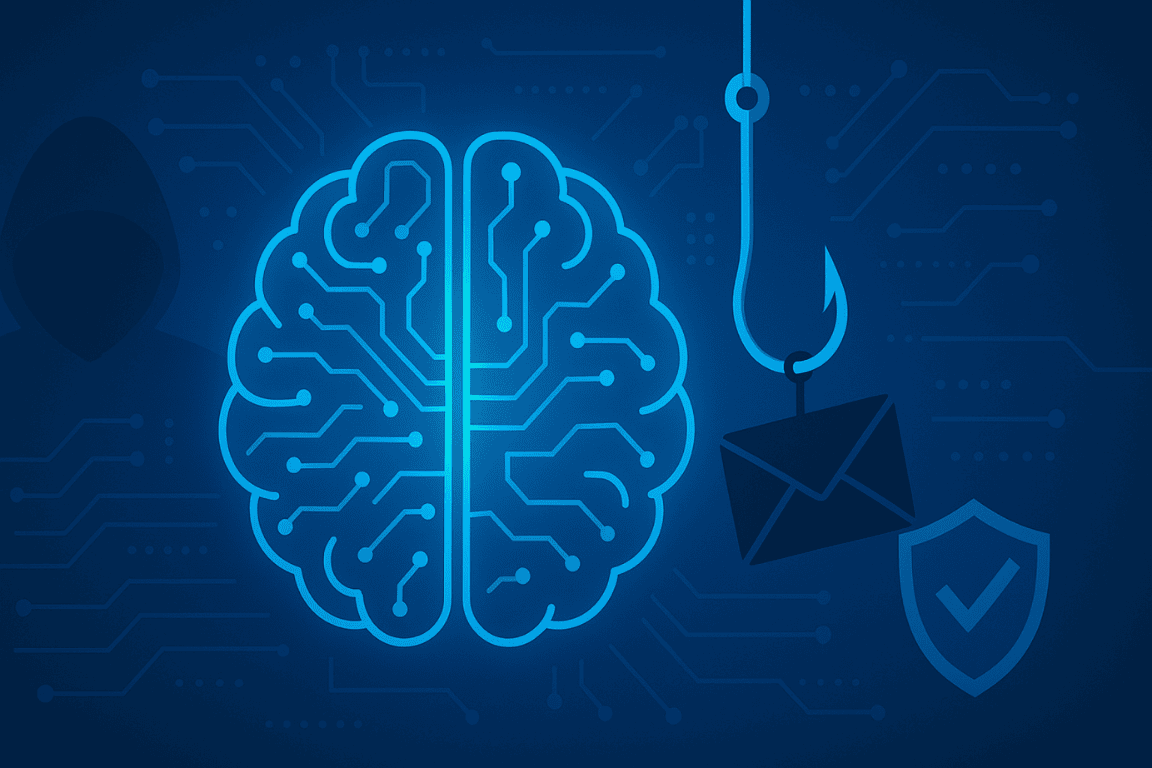Phishing Simulations-as-a-Service Explained: Smarter Employee Training with AutoPhish
How automation and AI are reshaping cybersecurity awareness for businesses of all sizes

Cybersecurity training often fails where it matters most: behavior. While companies spend millions on firewalls and endpoint protection, a single click by an employee on a well-crafted phishing email can still bypass all defenses.
Traditional training methods—annual seminars, slide decks, compliance checkboxes—are not enough. They lack context, repetition, and most importantly: realism.
This is where Phishing Simulations-as-a-Service (PhaaS) comes in. By automating realistic, behavior-driven phishing tests, platforms like AutoPhish provide organizations with a modern, cost-effective way to improve security awareness.
What Is Phishing Simulations-as-a-Service (PhaaS)?
Phishing Simulations-as-a-Service refers to cloud-based platforms that simulate phishing attacks to test and train employees. Unlike one-time workshops or static quizzes, these platforms provide:
- Recurring email simulations
- Role-based targeting (e.g., HR, finance, executives)
- Analytics on user behavior (who clicked, reported, or ignored)
- Just-in-time learning after each simulation
These simulations mimic real phishing threats in tone, structure, and design—often using AI to adapt and diversify content.
The goal isn’t to “trick” employees—it’s to help them build lasting instincts through exposure to safe, yet realistic scenarios.
Why PhaaS Is Superior to Traditional Training
1. Behavior-Based Assessment
Conventional training tests knowledge. PhaaS tests behavior. This distinction is critical: employees don’t fall for phishing because they lack information, but because they fail to apply it in real-time.
2. Continuous Improvement
Cybersecurity is not a one-time event. Regular testing ensures that awareness remains high and adapts to evolving threats. Monthly or quarterly phishing campaigns establish cybersecurity as an ongoing responsibility.
3. Measurable Risk Reduction
With each test, you gain actionable data:
- Click-through rates
- Reporting rates
- Repeat offenders
- Departmental risk profiles
This data enables targeted interventions and compliance reporting.
4. Cost Efficiency
According to IBM's "Cost of a Data Breach 2024" report, the average breach costs €4.45 million globally. Phishing simulations reduce breach likelihood at a fraction of that cost. Services like AutoPhish offer predictable pricing and automated delivery—ideal for small and mid-sized enterprises (SMEs).
5. Smarter Than Manual Campaigns by Consultants
While cybersecurity consultants can craft bespoke phishing campaigns, they are often expensive, limited in scope, and hard to scale. AutoPhish, by contrast:
- Delivers fresh, relevant campaigns regularly using AI-generated content
- Frees up CISOs and security teams to focus on critical threats and incident response
- Avoids reliance on manual creativity, which is difficult to sustain long-term
- Costs significantly less, while providing higher frequency and consistency
For companies without a dedicated security awareness team, AutoPhish provides enterprise-grade simulation capability out-of-the-box.
How AutoPhish Delivers PhaaS
AutoPhish is a European phishing simulation platform designed to be:
- Automated and scalable
- GDPR-compliant
- Powered by AI for content generation
Key Features:
- AI-generated phishing emails that evolve over time
- Spear phishing simulations for high-risk roles
- Detailed reports for CISOs, IT admins, or DPOs
- Education modules triggered after interaction with phishing attempts
- No credential capture—simulations are safe by design
The platform runs monthly or custom-timed campaigns and includes industry-specific templates (e.g., banking, logistics, health care).
The Science Behind Effective Phishing Simulations
Behavioral science supports learning by doing. Research by the National Cyber Security Centre (UK) and MITRE suggests that repeated exposure to simulated threats:
- Builds cognitive familiarity
- Encourages pattern recognition
- Improves threat detection over time
Moreover, simulations allow for safe failure. Employees who fall for a test receive immediate, contextualized feedback, turning a mistake into a microlearning moment.
Compliance and Legal Considerations
Under the NIS2 Directive, businesses in the EU must:
- Implement risk management and security training measures
- Ensure incident readiness and reporting
Phishing simulations qualify as part of these compliance strategies—especially when:
- Conducted regularly
- Accompanied by training feedback
- Documented for audits
AutoPhish is fully compliant with GDPR. It collects no personal data beyond internal login metadata (e.g., email address) and does not store passwords or real user inputs.
Getting Started
Launching a PhaaS program with AutoPhish typically takes less than 30 minutes:
- Define your target group(s)
- Schedule campaigns (monthly, quarterly, ad hoc)
- Monitor results via dashboard
- Share learnings with employees
No installation is required, and the platform integrates with standard email environments like Microsoft 365 and Google Workspace.
Conclusion
Phishing Simulations-as-a-Service is not just a trend—it’s a necessary shift in how businesses approach cybersecurity training.
By simulating realistic threats, reinforcing behavior, and enabling continuous improvement, PhaaS helps companies reduce risk without overloading their teams.
AutoPhish makes this process simple, safe, and scalable—helping your employees become the firewall.
Further Reading & Sources
- IBM Security: Cost of a Data Breach 2024
- ENISA: Threat Landscape 2024